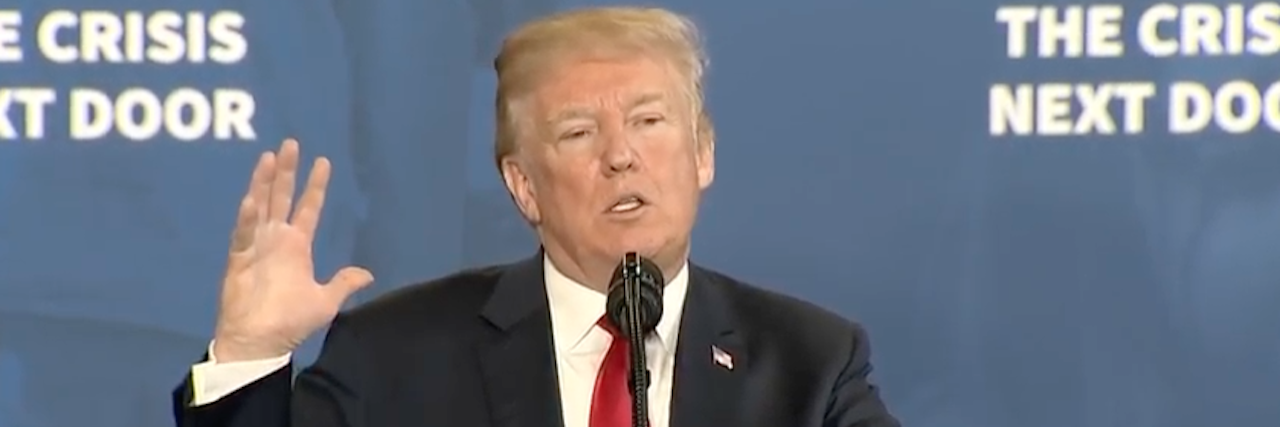Trump's Plan to Reduce Opioid Abuse Includes Limiting Prescriptions
President Trump announced his administration’s plan to fight the opioid crisis on Monday. Trump’s plan includes an effort to reduce opioid prescriptions, educate people about the “dangers of opioids,” and calls for harsher punishments for drug traffickers.
Speaking in Manchester, New Hampshire on Monday in front of a backdrop that read “Opioids: The Crisis Next Door,” Trump said the goal is to reduce opioid prescriptions by one third over the next three years. He called for opioid prescriptions reimbursed by government health programs, like Medicaid and Medicare, to follow “best practices” for prescribing in an effort to limit overprescribing. (A White House official told Politico the goal is to use guidelines set by the Centers for Disease Control.)
“We’ll ensure opioid addiction is not subsidized by the American taxpayer,” Trump added.
States will also be encouraged to use a national drug monitoring database that will be created to identify people seeking out multiple opioid prescriptions. Trump said there will be increased federal funding for the development of “non-addictive painkillers.”
“These things are incredibly addictive. We’re going to find that answer also,” he said.
The plan also asks Congress to pass legislation that lowers the amount of drugs needed to invoke the mandatory minimum sentences for drug traffickers who knowingly distribute illegal opioids that are potentially lethal, like fentanyl. The Department of Justice is also asked to seek the death penalty for drug traffickers “where appropriate under current law.”
In his speech, Trump also reiterated previous statements he’s made, arguing that the best way to beat the drug crisis is to “keep people from getting hooked on drugs to begin with.” To that end, he said “a lot of money” will be spent on commercials that show “how bad” opioids are, along the same lines as anti-smoking commercials.
“So kids seeing those commercials, during the right shows on television or whatever, the internet, when they see these commercials, [they’ll say] I don’t want any part of it,” Trump said. “That’s the least expensive thing we can do where you scare them from ending up like the people in the commercials. We’ll make them very very bad commercials.”
Trump also spoke of building a wall along the U.S. and Mexico border and ending sanctuary cities as ways to limit inflow of illegal drugs, shutting down illegal online marketplaces for drugs and increasing schools’ and first responders’ access to overdose-reversing drugs. He said he plans to introduce a plan for lowering prescription drug prices and advocated “Right to Try” legislation that allows terminally ill patients to use experimental therapies that haven’t yet been approved by the Food and Drug Administration.
Last fall, Trump declared the opioid crisis a “national emergency” and then a “public health emergency.” Trump’s comments and policy ideas shared today will likely be met with criticism from the chronic pain community, who argue that the majority of people using opioids for chronic pain use them responsibly (studies have shown approximately 13 percent of people using opioids “misuse” them, while between 1 and 12 percent become addicted), and policies designed to fight opioid addiction often make it harder for them to obtain treatment.

